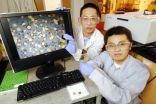These health plans, which can impose deductibles of more than $5,000, may cause members to delay care and can put families in financial jeopardy should a health crisis arise, say the authors of the report, "Profiling California's Health Plan Enrollees: Findings from the 2007 California Health Interview Survey." Yet high-deductible plans are often the only insurance many Americans — especially the self-employed and those with low-incomes — can afford.
The report, which profiles California's nearly 32 million insured residents, found that a total of 3 million commercially insured Californians were enrolled in high-deductible plans in 2007. Enrollment in high-deductible health plans is particularly high among members of preferred provider organizations (PPOs) — 28 percent of all commercial PPO members reported having a deductible higher than $1,000. Among commercial health maintenance organization (HMO) plan members, 14 percent reported having such plans.
High-deductible plans, defined by the California Health Interview Survey as those that have out-of-pocket deductibles of $1,000 or more for individuals or $2,000 or more for families, can exceed $5,000 annually.
"Many Californians can't afford higher-premium plans, especially in the current economic climate," said the report's lead author, Dylan Roby, a research scientist with the UCLA Center for Health Policy Research. "But the alternative — high-deductible plans — may cost less initially but can cost thousands of dollars when you need health care. When that much money is on the line, a health emergency can also become a financial emergency."
The findings have significance as the state establishes the new California Health Benefits Exchange to provide insurance to the state's uninsured as part of national health care reform. Per the federal law, this exchange will offer more robust health coverage options while capping out-of-pocket deductibles at $2,000 for individuals and $4,000 for families and offering subsidies for those with low-incomes.
"The insurance exchanges may offer a lifeline to individuals and families by establishing reasonable out-of-pocket maximums for families to pay," Roby said.
Lowering deductibles is especially important for California's low-income residents, as well as individuals not insured through an employer. Both groups have historically had less access to affordable coverage.
The report found that significant numbers of low-income Californians were likely to choose high-deductible health plans. Specifically, nearly one-third (32 percent) of low-income enrollees in commercial PPOs had such plans. One-fourth (25 percent) of low-income commercial HMO enrollees and 24 percent of commercial Kaiser HMO enrollees also reported choosing high-deductible plans.
Among the individually insured (those who purchase commercial insurance directly through brokers, HMOs or PPOs), 38 percent had high-deductible plans, compared with 12 percent of those with employer-based plans.
High out-of-pocket costs are associated with a reluctance to seek care. For example, commercial PPO enrollees with high-deductible plans were significantly more likely to delay care (20 percent) than those without high deductibles (17 percent).
And the vast majority of members in high-deductible health plans had no health savings account that might help mitigate the cost of unanticipated health care. Among commercially insured respondents with a high-deductible plan, 69 percent of PPO members, 77 percent of HMO members and 80 percent of Kaiser HMO members reported having no health savings account for medical expenses.
The findings demonstrate the need for expanded educational efforts to ensure that consumers understand the costs and consequences of health insurance choices, the authors said.
"Consumers need information to choose the right coverage so they receive the care when needed, not just when they can afford it," said Sandra Perez, director of the California Office of the Patient Advocate. "Thus, it is essential that a consumer have acces to reliable information and helpful decision-making tools to make an informed choice when selecting a health insurance plan."
To assist consumers, the Office of the Patient Advocate provides cost worksheets and other related information on its website.
The report provides a detailed look at the enrollment, characteristics, disease conditions, health status, health care use and barriers to care among members of private and public health plans in California.
Among the findings:
High HMO enrollment
California remains the leader in HMO enrollment in the nation, with approximately half of all Californians enrolled in an HMO, compared with 21 percent nationally.
Shift to PPOs in commercial market
The proportion of individuals who reported enrollment in commercial PPO plans rose from 26 percent in 2003 to nearly 28 percent in 2007, an estimated increase of 1.2 million Californians (from 7.6 to 8.8 million). By comparison, the proportion of insured Californians who reported enrollment in commercial HMO plans decreased slightly, from 42 percent to 40 percent.
Increase in Medi-Cal–managed care enrollment
Medi-Cal HMO enrollment increased by 245,000 to 2.4 million Californians in 2007, driven by the movement of Medicare and Medi-Cal enrollees into managed care.
Mental health
Over 15 percent of all adults in health plans reported experiencing serious psychological distress in the past year; lost productivity from mental health issues is prevalent, especially among the publicly insured. The cost of treatment was cited as a barrier to mental health treatment for more than 30 percent of adults in health plans.
INFORMATION:
Read the full report: "Profiling California's Health Plan Enrollees: Findings from the 2007 California Health Interview Survey."
The California Office of the Patient Advocate is an independent state office established to inform and educate consumers about their rights and responsibilities as health plan enrollees and to teach them how to make best use of the services offered by their health plans.
The California Health Interview Survey is the nation's largest state health survey and one of the largest health surveys in the United States.
The UCLA Center for Health Policy Research is one of the nation's leading health policy research centers and the premier source of health-related information on Californians.
For more news, visit the UCLA Newsroom and follow us on Twitter.
END
